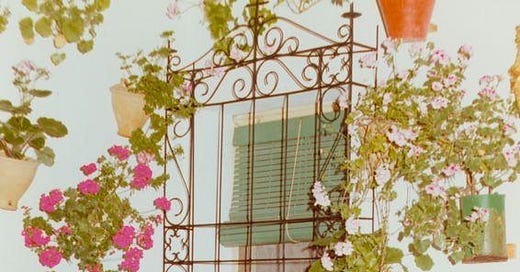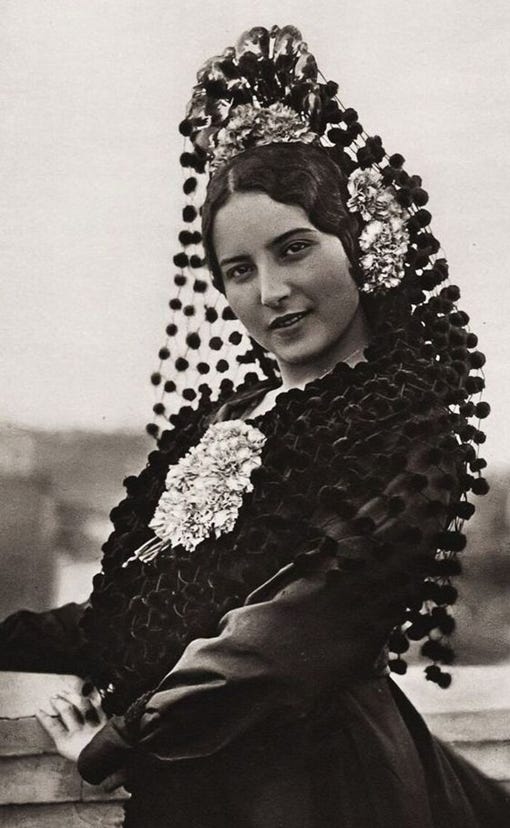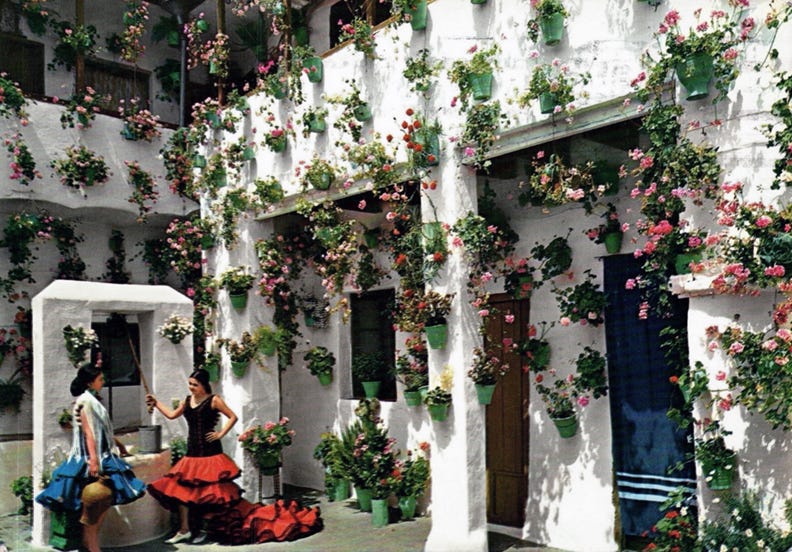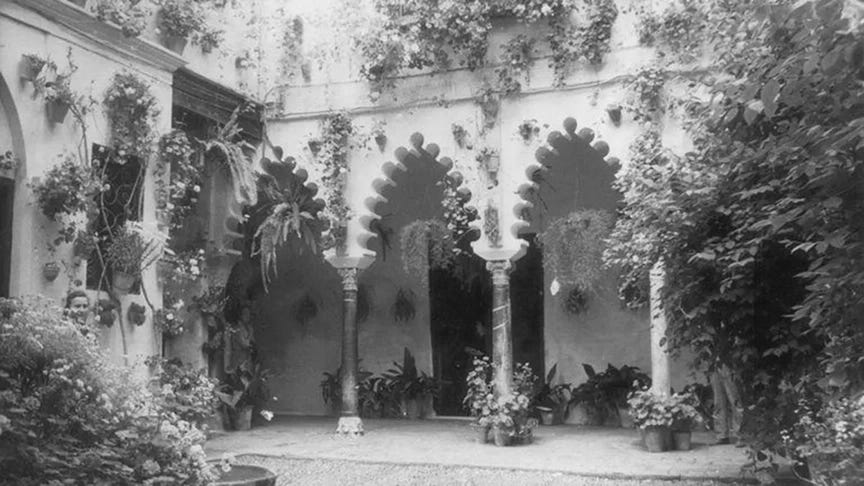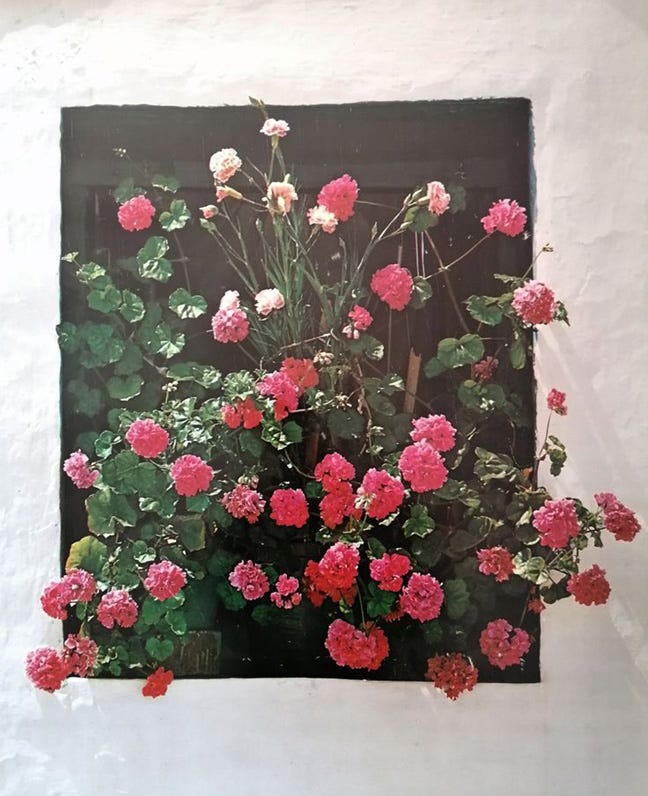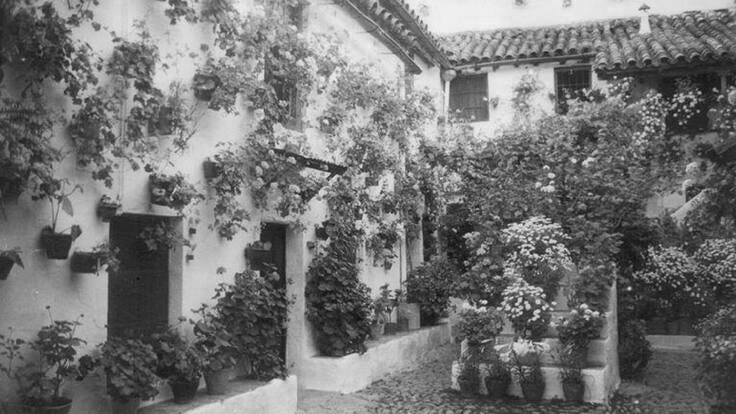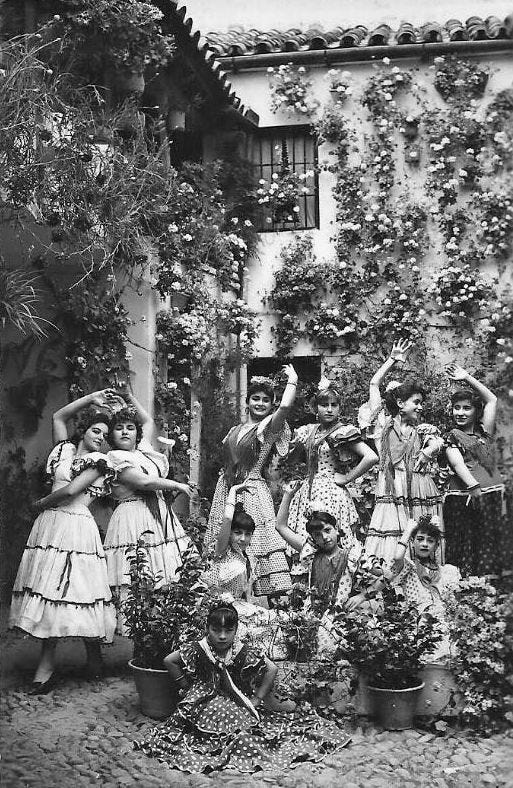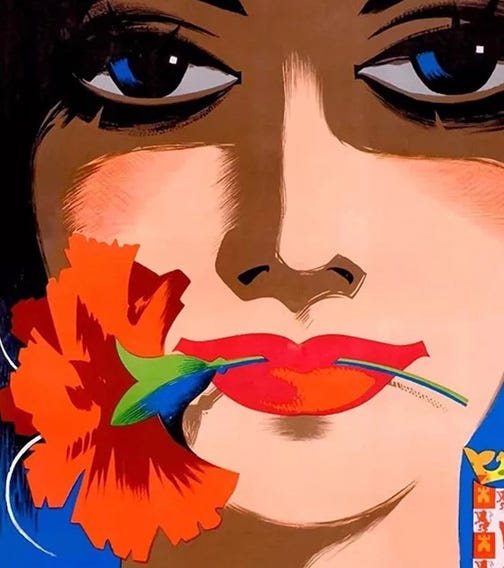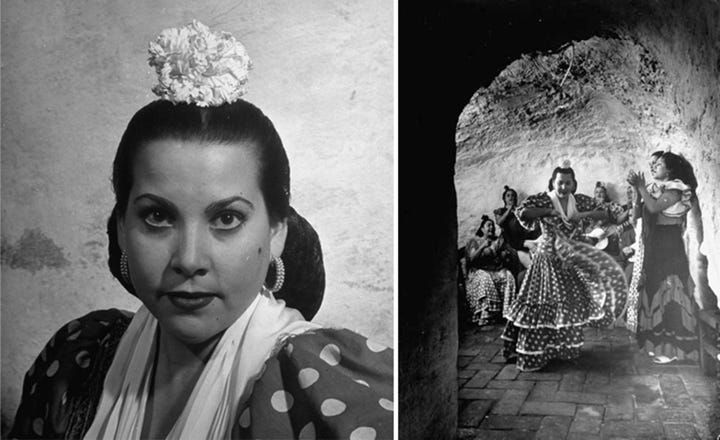Geraniums & Carnations in Andalusia
If you think a geranium blooming on a window sill would be nice, why not add more? Perhaps a few hundred potted flowers, installed over the entire facade of your home would be just about right. Every May, Córdoba, Spain shows how it’s done with the Fiesta de los Patios.
There are many beautiful flowers that grow in Spain, including orange blossoms, jasmine, and bougainvillea. The red carnation, which happens to be the national flower, is deeply embedded in many of the country’s rich cultural traditions.
Fiesta de los Patios
For two weeks every year, private courtyards in the historic center of Córdoba are opened to the public. This year, the festivities begin May 18th.
At the turn of the last millennium, this capital of al’Andalus under Muslim rule, was one of the largest and most culturally vibrant cities in the world. The architecture of Córdoba contains elements from its rich history, which is a mosaic of Roman, Visigoth, Muslim, Jewish, and Christian populations.
The apartment buildings were constructed by the Romans for communal living. At the heart of each property is a square courtyard to be shared by the residents for eating, socializing, washing, and planting. Moorish influence brought fountains or wells that provide clean water, fruit trees, and hanging baskets of roses and other flowers. The custom for hanging flowers caught on…
Ceramic pots with a flat backside are used for mounting on the walls. While the gardens include a variety of flowers, geraniums are used abundantly, and seem to appear more than any other bloom. The festival began in 1918. In 2012 it was added to UNESCO’s list of intangible cultural heritage of humanity.
Festival spectators roam the ancient streets to peek at the stunning personal gardens. A popular spot for photos is the beautiful Calleja de las flores (Alley of Flowers). Behind the bloom studded buildings, you can see the bell tower from the nearby Mezquita / Catedral. The prayer hall of the mosque is likely the most iconic image associated with Córdoba.
Some patios are open year round. According to Monty Don, two cypress trees placed outside a doorway signals that anyone can enter. If you’re interested to see his tour of the Fiesta de los Patios, I’ve included a video at the end of this post.
Los Claveles… ole!
The name carnation is likely derived from ‘coronation’ referencing flower crowns. Another theory is that it comes from the Latin word carnis, relating to the color pink. In Medieval England carnations were referred to as sops-in-wine because they were sometimes added to wine or ale for extra flavor. It has also been known as clove due to its wonderfully spicy fragrance. The Spanish name for the bloom, clavel, comes from the word clove.
The sixteenth century Queen of Spain, Isabella of Portugal, was known as Empress of the Carnation. The story goes - during their honeymoon at the Alhambra in Granada, Charles V gifted her some seeds. They grew to be beautiful red carnations, a flower she had never seen. They made such an impression on her, he had thousands planted in her honor.
The southern region of Spain, Andalucía, encompasses the culturally significant cities Córdoba, Sevilla, and Granada. In the Andalusian folk style, it’s customary for single women to tuck a carnation behind their ear. A flamenco dress can be accented with carnations piled on top of the head, or nestled into a bun or comb. Red carnations are associated with passion and strength, while white ones are emblematic of innocence and purity.
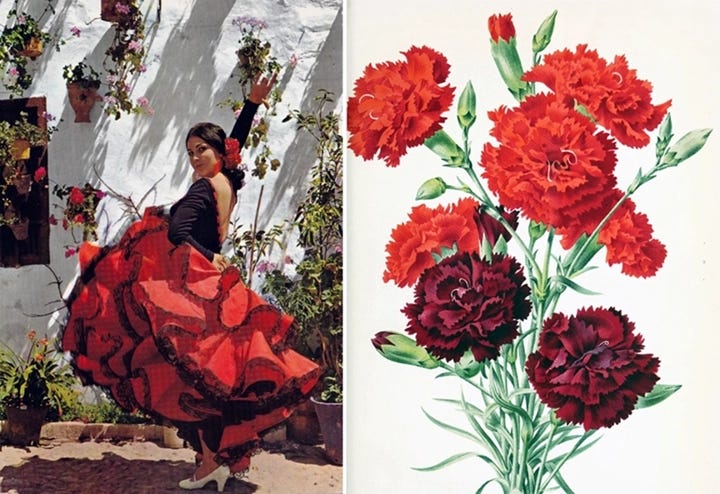
Flamenco dancers wear ruffled dresses that resemble the frilled petals of the carnation. The origin of this regional costume is often traced back to Romani women visiting an agricultural fair in Seville in the mid nineteenth century.

There are other uses for Red carnations in Spain. For example, they are thrown into the bullfighting ring after a matador defeats a bull!
During the celebration of San Isidro in Madrid, people get dressed up in folk costumes. Married women don two red carnations and single women wear two white carnations. Those in a relationship adorn themselves with one white and one red carnation, while widows choose two red and one white. Young girls are to wear one pink carnation.
Signaling relationship status with a flower is also a custom for men and women in different cultures including Tunisia and across many Polynesian traditions.
In this episode of Around the World in 80 Gardens, Monty Don tours Italy, Morocco, and Spain (including Alhambra and Generalife in Granada). If you’re only interested in Fiesta de los Patios in Córdoba, skip ahead to 44:50.


